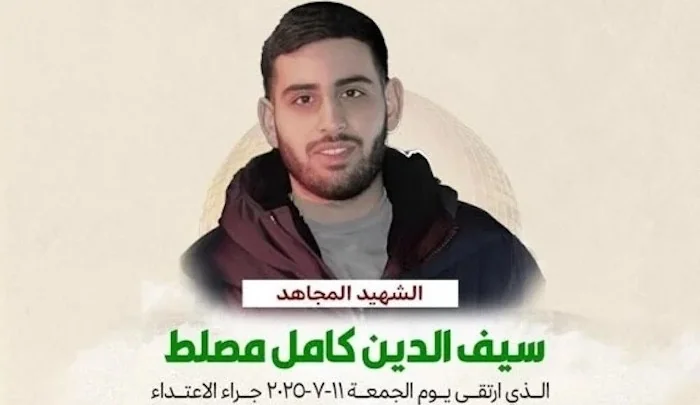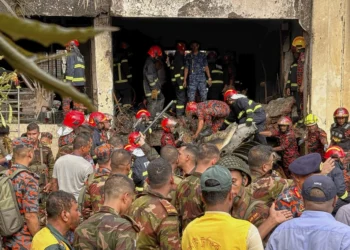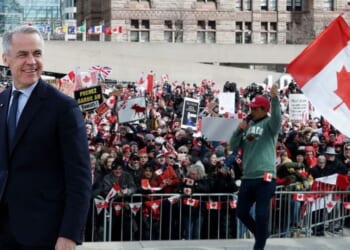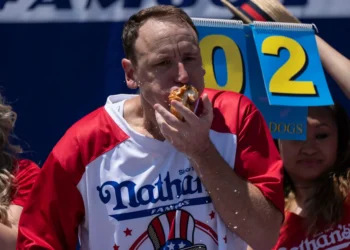
[Want even more content from FPM? Sign up for FPM+ to unlock exclusive series, virtual town-halls with our authors, and more—now for just $3.99/month. Click here to sign up.]
Since 2023, five American citizens have been killed in Israel and the West Bank under murky circumstances. While each death is a tragedy, the broader pattern raises serious questions about whether these incidents are organically occurring tragedies or carefully staged provocations designed to advance a political agenda. The Regavim Movement’s April 2025 report, False Flags and Real Agendas, provides a framework that helps contextualize these deaths within the broader machinery of anti-Israel lawfare and narrative manipulation.
CAIR’s Media Campaign
Following the death of Sayfollah “Saif” Musallet, representatives of the Hamas-linked Council on American-Islamic Relations (CAIR) appeared on television news broadcasts at least eleven times within a week. In each of these appearances, CAIR provided no new information about the case, instead offering a mix of emotional rhetoric, speculative accusations, and calls for federal investigations. Their commentary emphasized concern for the treatment of American citizens abroad—concern notably absent in their silence over American hostages held by Hamas. CAIR’s selective outrage underscores a pattern: American identity is weaponized when it can be used to undermine Israel, and disregarded when it might challenge Hamas or other Islamic actors.
Regavim Report: Staged Provocations and Fabricated Violence
The report by the Regavim Movement details how many reports of “settler violence” are actually propaganda to pressure Israel financially, and diplomatically, as well as the United States.
CAIR’s media campaign fits right into this pattern.
The Regavim report exposes how Palestinian operatives, often in coordination with foreign and Israeli far-left activists, deliberately stage confrontations and vandalism, including fake “Price Tag” attacks, in order to manipulate public perception and provoke media condemnation.
In the South Hebron Hills, Arab field operatives have:
- Directed activists (including foreigners on tourist visas) into friction zones,
- Staged provocations, and when they fail to provoke settlers into reacting, they “fabricate events or distort minor incidents,”
- At times, they “even damage the property of local Arabs themselves and blame settlers or the army.” [Regavim, p. 29]
- These false incidents are then accompanied by “carefully staged and meticulously edited documentation,” filmed and distributed to media and international agencies, creating the impression of ongoing Jewish violence even when no actual violence occurred. [Regavim, pp. 28–30]
Specific Examples from the Report
- November 30, 2017 — Qusra Incident. The UN reported that settlers shot a Palestinian farmer in cold blood. In reality, a group of Israeli teenagers hiking in the area were ambushed by dozens of Palestinians, one of whom grabbed a security guard’s weapon. The group fled to a cave and were later rescued by the IDF. One Arab attacker was killed as the guard defended the group. [Regavim, p. 47]
- February 7, 2018 — Beit Einun Incident. The UN claimed that a young Palestinian was shot by a Kharsina settlement guard while farming. In fact, Hamza al-Zama’ara was a 19-year-old terrorist who attempted a stabbing attack and was neutralized. [Regavim, p. 48]
- Masafer Yatta – 2023+972 Magazine published a report implying imminent settler violence based on “threatening” Jewish presence. But video footage confirmed it was merely a peaceful tour of foreign journalists, and no incident occurred. Still, the narrative of threat was broadcast globally. [Regavim, p. 29]
- South Hebron Hills — IDF Recording (2024). A left-wing activist from Ta’ayush was caught on camera threatening local Bedouins, saying he would report them to the Palestinian Authority unless they participated in provocations near Jewish communities. [Regavim, p. 30]
- On Graffiti and Hebrew Slogans – While this particular version of the report does not detail specific incidents of Hebrew graffiti hoaxes, it confirms a broader pattern: when instigated provocations fail to escalate, activists and operatives fabricate evidence, including “damage to property of local Arabs” — a category where such graffiti would fall. These acts are then “documented” with staged photos or videos, helping propagate the libel of Jewish culpability. [Regavim, p. 29]
The Victims
- Tawfic Abdel Jabbar (17) – Killed January 19, 2024, by Israeli forces on Highway 60. Activists claim he was shot while driving. Israeli sources say the vehicle was behaving suspiciously near a checkpoint.
- Mohammad Ahmed Khdour (17) – Shot on February 10, 2024, near Biddu. Circumstances unclear, with contradictory accounts from Palestinian witnesses and Israeli military sources.
- Aysenur Ezgi Eygi (26) – A Turkish-American activist fatally shot during a protest in Beita in September 2024. Her presence at the site of violent unrest and connections to pro-Palestinian organizations raise eyebrows.
- Amer Mohammad Rabee (14) – Killed on April 6, 2025, during a rock-throwing incident in Turmus Ayya. He was reportedly among a group attacking Israeli vehicles.
- Sayfollah “Saif” Musallet (20) – Beaten to death on July 11, 2025, in Sinjil. Family claims settlers ambushed him while camping on ancestral land. CAIR launched a rapid media campaign within hours.
Pattern Recognition: Signs of Staging
- All victims are young Palestinian-Americans, often with little known political activity before their deaths.
- Incidents occur in rural, disputed zones known for clashes and weak media oversight (Turmus Ayya, Sinjil, Biddu).
- Each death is followed by an immediate media and NGO campaign, often led by CAIR, B’Tselem, or international activist groups.
- Eyewitness accounts are unverified, or come from politically motivated sources (e.g., Gaza Health Ministry, Yesh Din).
- Israeli forensic or surveillance data is either absent or suppressed in international media coverage.
Coinciding “Settler Attacks” and International Pressure
In January 2025, following President Trump’s reversal of Biden-era sanctions targeting “extremist” settlers, alleged “settler attacks” on Palestinian villages were widely reported. These reports, primarily sourced from Palestinian authorities and NGOs such as Yesh Din and B’Tselem, emerged almost immediately after policy changes—leading to widespread media coverage. The rapid timing and geographic implausibility of coordinated settler attacks across multiple villages raise significant doubts about the authenticity of these incidents. These events coincided with a coordinated international pressure campaign by the EU, UN, and certain U.S. factions seeking to reinstate sanctions and amplify criticism of Israeli policies. The EU specifically signaled potential trade suspensions and sanctions reviews to increase diplomatic pressure.
Indicators of Narrative Manipulation:
Pre-positioned Media Coverage:
Several outlets—including The Guardian, Time, and Al Jazeera—had detailed articles prepared and published within hours of the supposed settler attacks and Trump’s reversal. The speed and coherence of this international media rollout suggest the stories may have been pre-written in anticipation of a policy change, rather than the result of real-time reporting.
No Forensic or Independent Confirmation:
The “attacks” that allegedly occurred right after the reversal were primarily reported by:
- The Palestinian Health Ministry
- NGOs like Yesh Din and B’Tselem
- Wire services relying solely on secondhand reports
- In many of the cited cases, there is no surveillance video, no IDF field reports, and no arrests or formal charges against any Israeli citizens—even months later.
Geographically Implausible Coordination:
The attacks were reported to have occurred across multiple villages (e.g., Qusra, al-Mughayyir, Turmus Ayya) within a short timeframe—suggesting a level of coordination unlikely from disparate, unconnected “extremist settlers.” If true, this would imply a nationwide mobilization within hours, yet no group claimed responsibility, and no coordinated movement was documented by Israeli intelligence.
This raises the possibility that the attacks were exaggerated, or opportunistically reported to coincide with Trump’s policy move.
International Pressure Campaigns Surrounding Musallet’s Death
- June 2025: The UK, Canada, Australia, New Zealand, and Norway imposed sanctions and travel bans on “far-right” Israeli ministers Bezalel Smotrich and Itamar Ben-Gvir over incitement of settler violence in the West Bank.
- EU Foreign Ministers (February–July 2025) debated measures including suspending the EU–Israel Association Agreement and restricting imports from settlements, citing human rights concerns and rising settler violence.
- July 12–13, 2025: International and Israeli media swiftly reported the killing of Musallet. U.S. Ambassador Mike Huckabee demanded a criminal investigation, accusing Israeli settlers of terrorism. Multiple U.S. Congress members and CAIR‑Florida issued calls for a full FBI and State Department investigation.
- July 18, 2025: A large-scale sheep massacre in Arab al‑Kaabaneh village prompted further pressure from the UN and U.S. officials, amplifying calls for investigations.
- Post-July 2025: Additional international sanctions and travel bans targeted Israeli officials as global scrutiny intensified due to the Gaza war.
Conclusion
There is no question that each death is a personal loss. But the pattern surrounding these incidents suggests strategic exploitation rather than random tragedy. Whether these Americans were knowingly inserted into dangerous situations, or their deaths were simply co-opted, the effect is the same: the weaponization of grief to delegitimize Israel. Until independent, verifiable investigations are the standard—not NGO press releases or PA talking points—the narrative of “settler violence” must be viewed with deep skepticism.















